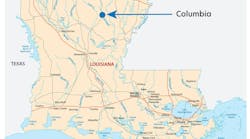By the OGJ Online Staff
HOUSTON, Oct. 10 -- Eight companies have agreed to form a dimethyl ether production, sales, and research company.
TotalFinaElf SA and Japanese companies NKK Corp., Toyota Tsusho Corp., Hitachi Ltd., Marubeni Corp., Idemitsu Kosan Co. Ltd., INPEX Corp., and Nippon Sanso Corp. intend to launch Tokyo-based DME International Corp. Oct. 19.
DME is often used as a propellant or solvent, but has been touted as an alternative to diesel fuel and liquefied petroleum gas.
DME International, with capitalization of 100 million yen, will study DME production using NKK's proprietary direct synthesis techniques. NKK said the technique allows use of untapped reserves of low-grade coal and small gas fields.
The company also will begin the conceptual design phase for a direct-synthesis demonstration plant. It hopes to start production of commercial DME in 2006. The size of the venture depends on demand, but the companies predict production of 800,000-1.5 million tonnes/year.
NKK noted DME is nontoxic and easy to handle, giving it wide applications in areas currently served by commercial home fuels (as an alternative to LPG), transportation fuels (as an alternative to diesel fuel or for fuel cells). It also has applications as a generator fuel (in thermal power plants and fuel cells) and as a source of hydrogen energy.
The companies cited a 2000 NKK study that predicted a latent market for DME in Asia alone at 100 million tonnes/year by 2010.
NKK has 34% of the venture, Toyota Tsusho and Hitachi 17% each, and TotalFinaElf, Marubeni, Idemitsu Kosan, and Inpex 7% each. Nippon Sanso has 4%.
Another venture also is developing DME as a fuel. Japanese companies Mitsubishi Gas Chemical Co. Inc., JGC Corp., Itochu Corp., and Mitsubishi Heavy Industries Ltd. are considering building a plant in Pilbara region of Western Australia at a cost of $500-600 million (US). They announced plans earlier this year (OGJ Online, June 6, 2001).
